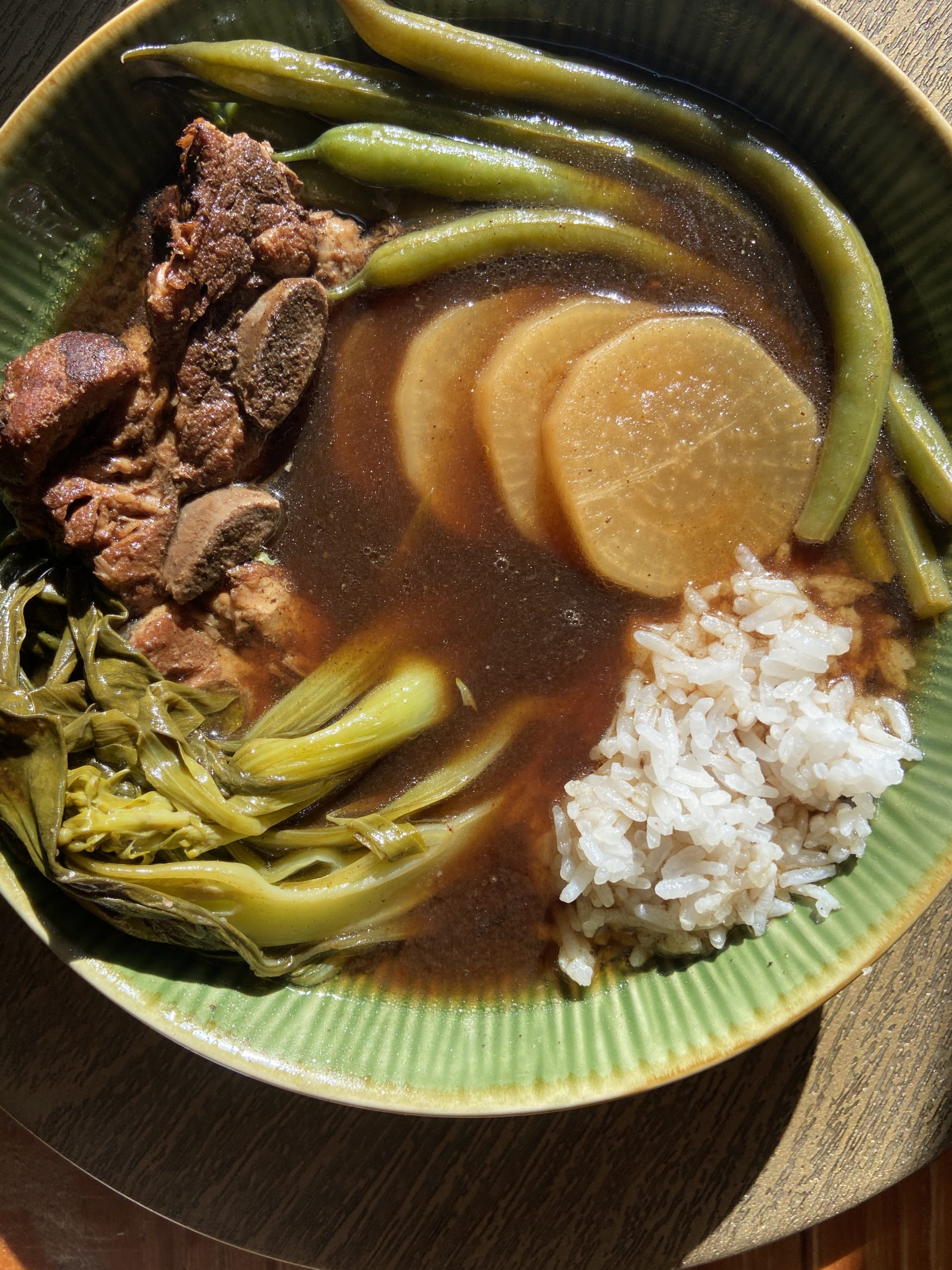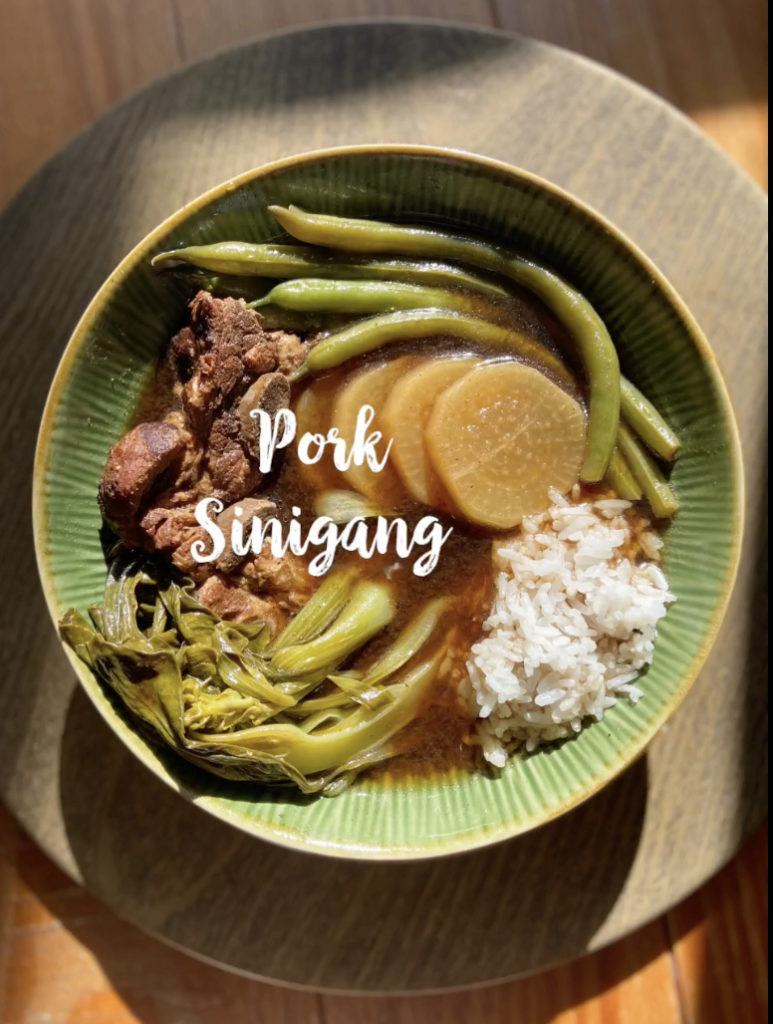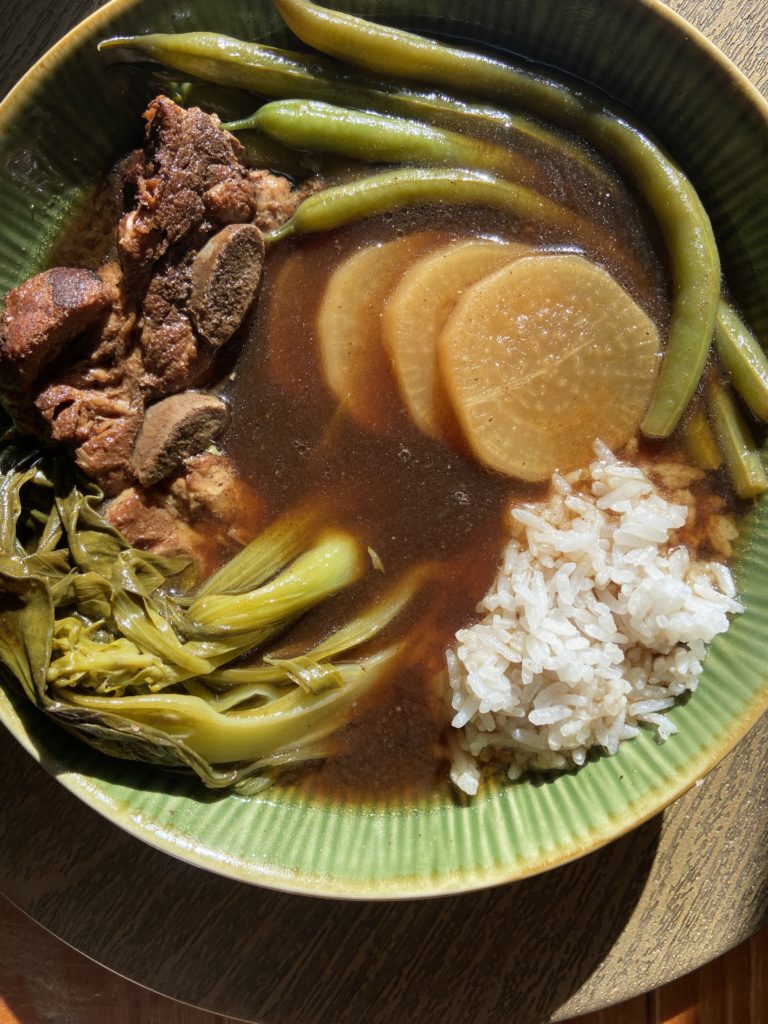Pork Sinigang

October 24, 2022

Pork Sinigang is a Filipino tamarind-based soup. If I had to pick one dish to eat forever this would be it. Rich with bone broth, sour and savory with meat and vegetables – it’s full of umami (savoriness).
Sinigang translates to “to stew” and can be made multiple different ways. Some with fish or shrimp and pork or beef. Fish sinigang is usually referred to as Sinigang na Bayabas, which uses tomatoes and unripe guavas instead of tamarind for the soup base. Either way, I love to ladle this over a bowl of steamed jasmine rice topped with a family recipe; patis (fish sauce) and jalapeños.
SINIGANG is one that speaks to my soul. Every time that pork broth hits the air with the rice cooker going – it smells like Lola’s house and I am immediately transported to another space and time. Back when I was a kid growing up in San Francisco, on those cold foggy nights, and the windows in the kitchen all steamed up with multiple generations gathered around the table. I just love how recipes and food can activate your senses and bring about the most realest memories like time travel in a bowl.
There’s a two-part method to this recipe:
1) Cook the pork separately since it takes the longest to cook.
2) Use the pork broth to simmer the vegetables.
The reason I do this is so I don’t overcook the pork or vegetables and so I can strain the broth from any bone fragments or fatty foam. This keeps the broth nice and clear. To help get the job done I use a large Pyrex liquid measuring cup then strain the broth using a handheld mesh strainer directly into the pot to simmer the vegetables.

SINIGANG
Tamarind Pork Soup
Serves 6 – 8
| 3 – 4 lbs. Baby spare ribs or country ribs and/or pork stew pieces |
| 1 large Daikon radish, cut into thin half moos or full moons depending on width of radish |
| 1 1/2 lbs. chinese long beans or green beans |
| 4 Bok choy bulbs, trim roots |
| 2-3 large jalapeños |
| 1 tsp. garlic powder |
| 1 tsp. onion powder |
| 4 tbsp. tamarind paste (Indian tamarind paste) |
| 1/3 cup fish sauce (patis), garnish |
| Salt to taste |
Method
Part 1: Pork & Broth
- COMBINE pork, 2 tbsp. tamarind paste, plenty of salt, garlic and onion powder
- COVER with about 12 cups of water and simmer in the pot for approx. 2-3 hours until slightly tender
– or –
- SET on low for 8 hours in the slow cooker | 1 – 2 hours in the instant pot
Part 2: After Pork is Finished Simmering
- ADD 6 cups of pork broth (using mesh strainer) into a large pot with daikon radish and bring to a light boil.
- ADD whole jalapeños to the broth and cook for 3 – 5 minutes or until jalapeños start to wrinkle, but DO NOT let them split open or your broth may be too spicy.
- REMOVE jalapeños immediately and set them aside to cool.
- SIMMER daikon until slightly soft enough to prick with a fork.
- ADD green beans, cook for a few minutes then add bok choy and more pork stock as needed to cover all the vegetables.
- ADJUST the seasoning. If you want more tang, add 1-2 tbsp. of tamarind paste. If you need more savory, add a pinch more garlic and onion powder and/or salt.
- SIMMER until string beans are tender but crip.
- ADD pork into the pot of vegetables and add more broth if needed.
For your conidment
- CHOP jalapeños finely, after they are cooled.
- ADD 1/3 cup of patis (fish sauce).
- SERVE sinigang in a large bowl over rice or without, but definitely spoon over the patis-jalapeños for garnish.
* This condiment isn’t necessary, but it’s specific to the Jacinto family recipe. My titas and dad use to make it all the time and now I do too because Filipino-style-umami is FIRE!